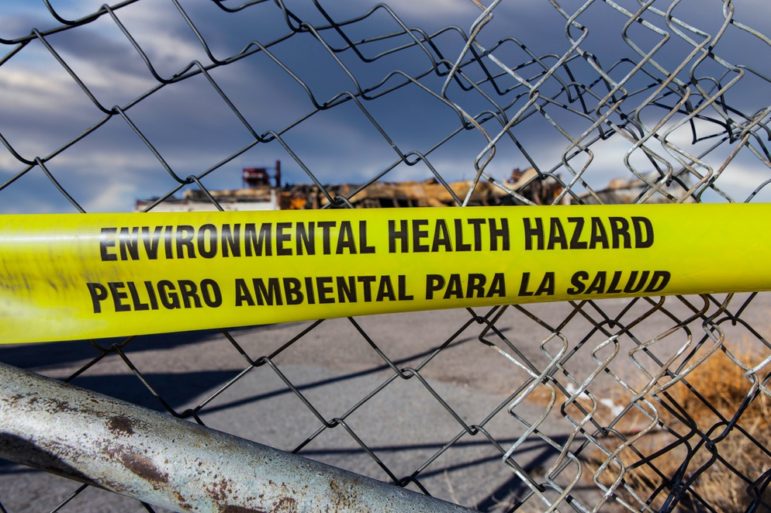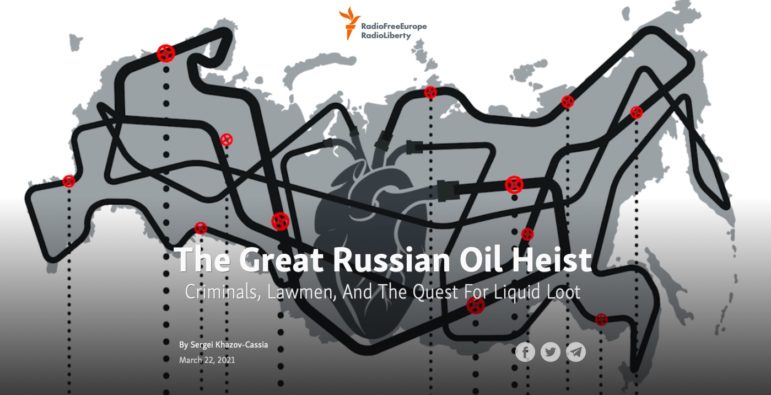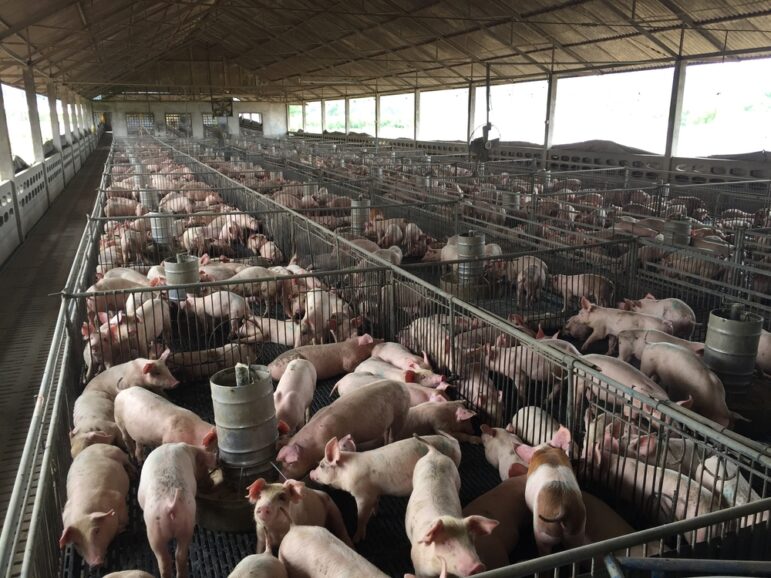

Image: Shutterstock
Investigating Environmental Crimes and Climate Change
Editor’s Note: Over the next few weeks, GIJN is running a series drawn from our forthcoming Reporter’s Guide to Investigating Organized Crime, which will debut in full in November at the Global Investigative Journalism Conference. This section, which focuses on environmental crimes, was written by Toby McIntosh, senior advisor to the GIJN Resource Center.
Networks of business interests, government officials, and criminal groups run illegal operations that harm the environment in multiple ways. They drive worldwide illegal trafficking in wildlife and seafood, timber, minerals, hazardous waste, and toxic chemicals. Such environmental crimes are sometimes connected with other criminal activity, such as drug trafficking and money laundering.
Environmental Organized Crime
To explain the “convergence” of criminal actors, Andrea Crosta, the executive director of Earth League International, tells a story about meeting a well-known Asian wildlife trafficker in an undisclosed South American country who was selling shark fins and more.
Then a person from a criminal organization arrived: “So all of a sudden we were talking about money laundering.” Then a third person joined in, who worked at customs at an international airport and facilitated the smuggling “of pretty much everything, including people.”
“This,” Crosta explained, “is how the top level of environmental crime looks.”
“Abuse of the environment is the fourth largest criminal activity in the world,” the United Nations Environment Program stated in 2017. “Worth up to US$258 billion, it is increasing by five to seven per cent every year and converging with other forms of international crime.”
Monetary estimates are just one way to measure the costs, however. As important are the effects scientists are cataloguing, such as deforestation, overfishing, the rapid decline of biodiversity, the connections with zoonotic diseases, and the impact on the climate crisis.
Climate change is hastened by various environmental crimes. Most notably, illegal logging contributes to deforestation. Also, banned substances that contribute to warming are sold on the black market. And climate change causes negative economic and social unrest, putting additional pressure on the environment.
Finding Sources
With such a wide interrelationship of corruption, organized crime, and environmental criminals, finding sources requires casting a big net.
The perpetrators include many actors, from the ground-level workers to the ultimate consumers, and all along the supply chain, including corrupt officials. The involvement of organized crime is common, but some researchers see shades of gray, one calling illegal wildlife trafficking (IWT) “disorganized crime.”
Many journalists and observers stress the value of doing research at the points where the crimes are committed and where illegal products are ultimately purchased. Others stress the need to concentrate on the supply chain, to expose those who facilitate, finance, and benefit from environmental crime. There are many starting points.
The best sources are:
- Nongovernmental organizations (NGOs), local and international.
- Local citizens.
- Government officials of many types, including those involved in trade and transportation.
- Conservation officials.
- Law enforcement officials.
- Poachers, forest workers, fishermen.
- Persons in the supply chain, not only sellers but those working in the transportation sector.
- Persons convicted or in prison for environmental crimes.
- Scientific researchers.
- Consumers.
- News stories on arrests and court cases.
It’s increasingly necessary to search for leads online, where wildlife trafficking in particular is prevalent. Get advice from experts, because buyers and sellers disguise their transactions.
Also important is to understand the legal and regulatory environments, and how they are exploited.
And take time to learn about the business side of trading in specific products. For example, the timber business can be looked at in five stages: extraction, milling, transportation, marketing, and profit laundering, according to a 2018 report, Razing Africa: Combatting Criminal Consortia in the Logging Sector. The report also draws attention to a frequent tactic in environmental crime, mixing illegal products with legal ones to evade detection.
Case Studies
This investigation by the Organized Crime and Corruption Reporting Project (OCCRP) examined illegal harvesting in Namibia of protected hardwood species, such as African rosewood, by two Chinese-fronted companies. Besides doing extensive travel for first-hand observation and interviews, journalist John Grobler posed as a prospective wood buyer. Grobler got his hands on an internal government auditing report as well as official export data. His story examines a company owned by a Chinese immigrant with a long criminal record.
Bolivia’s Jaguars Targeted in Search of ‘American Tiger’ Parts
This Mongabay article by Vanessa Romo reveals that Chinese-controlled trafficking syndicates are smuggling jaguar body parts out of Bolivia. The investigation identified three criminal groups operating in Bolivia, composed almost entirely of Chinese nationals. The investigation was developed with undercover intelligence-gathering by Earth League International and the Dutch national committee of the International Union for Conservation of Nature (IUCN).
RDF Burned in Bulgaria May Contain Toxic Waste
Written by reporter Ksenia Vakhrusheva, this exposé describes how loose regulations and insufficient control turned municipal waste incineration into an ecological and health risk. “Waste imports from countries, such as Italy, raise greater concerns about the public’s health and safety, as Italian anti-mafia activists claim that waste processing in their country has close ties with organized crime and often mixes toxic waste into domestic waste,” Vakhrusheva wrote. The original article was published on bellona.ru in June 2019 and was translated from Russian for publication on bluelink.info.

Radio Free Europe/Radio Liberty’s exposé on how organized crime is illegally siphoning off massive amounts of Russian oil. Image: Screenshot
Radio Free Europe found that organized crime is involved in the “industrial-scale” theft and sale of oil in Russia. “Organized crime groups siphon off untold amounts of oil using illegal taps and hoses to pump the liquid loot from pipelines into waiting tanker trucks or river barges, while police and security officers provide protection and logistical assistance in exchange for a cut of the illicit profits,” according to this investigation by Sergei Khazov-Cassia.
This investigation by the Environmental Investigation Agency, a UK-based NGO, identified illegal networks that use Romania as an entry point to Europe for hydrofluorocarbons (HFCs), greenhouse gases primarily used for cooling and refrigeration.
The Big Picture
For overviews, see reports by international organizations, such as:
- The World Wildlife Crime Report by the UN Office on Drugs and Crime (UNODC) and the UNODC Annual Report 2020 provide a global perspective.
- The Financial Action Task Force (FATF) report, Money Laundering and the Illegal Wildlife Trade, offers key details on the financial flows involved. Also see Trade-Based Money Laundering and Natural Resource Corruption, by the World Wildlife Fund.
- The fifth edition of the Global Biodiversity Outlook from the Convention on Biological Diversity documents species loss.
- Illicit Pesticides, Organized Crime and Supply Chain Integrity, a report by the United Nations’ Interregional Crime and Justice Research Institute (UNICRI).
NGOs are prolific investigators in this area. For example:
- TRAFFIC: The Case Digest — An Initial Analysis of the Financial Flows and Payment Mechanisms Behind Wildlife and Forest Crime.
- Wildlife Justice Commission: Wildlife Crime — The Soft Underbelly of Organized Crime.
- World Wildlife Federation: Why Is Money Laundering a Critical Issue in Natural Resource Corruption?
- The Ocean Panel’s report: Organized Crime in the Fisheries Sector.
From the academic world comes The Convergence of Environmental Crime with other Serious Crimes, a 2020 research-based report. “The increase in environmental crime each year, combined with its disastrous consequences for the world, shows the importance of investigating the diversification of organized crime into the illegal trade in natural resources,” wrote criminologists Daan P. van Uhm and Rick C.C. Nijman.
See a longer list of reports by international organizations and NGOs here.
Tips and Tool for Investigations
Going Undercover
Going undercover is standard operating procedure for law enforcement officials and some NGO researchers, but it can be very risky. Journalists should have a high bar before deciding to misrepresent and immerse themselves in a criminal underworld. For a helpful set of guidelines on the risks and rewards of this reporting tactic, consult this checklist from the International Center for Journalists.
“Undercover investigations do have a role to play but, in my view, should be a last resort,” warns Julian Rademeyer, author of the book “Killing for Profit: Exposing the Illegal Rhino Horn Trade.” Esther Nakazzi, a freelance science journalist and an Internews trainer for South Sudan, adds: “The people you are dealing with in environmental crime are already criminals, they can be violent.” Nakazzi and others offer a number of recommendations, including strong security procedures. If you go to a rendezvous, share your location with an editor and colleagues. Work in pairs. And be convincing. To be successful, Nakazzi says, “believe in your cover,” “keep it businesslike,” and “talk like you have the cash.”
Drones and satellites offer less dangerous alternatives to digging into activities like illegal logging and mining.
“Once you gather this information, you get into tracking down the roads that lead there,” explained Paul Radu, co-founder of OCCRP, in a Forbes interview. He continued: “These people would have to transport the illegal wood somehow and you get into finding out who owns those vehicles or where they are going. For this, you may use wildlife cameras that you can place on trees, some with infrared, some with noise activation, or airplane sensors to identify when planes are coming and leaving, and so on. All the signal intelligence from direct observation is then combined with open source intelligence.”
See also GIJN’s guides to using satellite imagery and drones.
Using Social Media
Social media is now used extensively to facilitate trafficking. Searches can provide story ideas, plus names of suspects and sources, and images.
Developing the right search terms requires specialized knowledge. Codewords are often used. GIJN spoke with expert investigators to glean some tips. Among their advice:
- Figure out keywords about the target species.
- Include terms about types of transactions, such as the words: buy, order, purchase, etc.
- Think carefully about which platforms to search.
- Take care to protect your own identity if you engage on social media.
For a quick peek at what’s available, check the Twitter feed of the Hounds of Actaeon, a group “dedicated to exposing troubling wildlife trades on social media.”
Some story examples:
- How Instagram Celebrities Promote Dubai’s Underground Animal Trade, by Foeke Postma of Bellingcat;
- From Skies to Screens: How Migratory Cranes Are Threatened by the Internet by Rafiullah Mandokhail of Pakistan’s Daily Parliament Times;
- Amazon Rainforest Plots Sold Via Facebook Marketplace Ads, by Joao Fellet and Charlotte Pamment of BBC Brasil.
Useful Databases
Specialized databases exist, particularly about specific iconic animals. There are too many to list them all, but here you will find several of the most noteworthy. See also the entries below under Trade Records and Seizure and Arrest Records.
- The CITES Trade Database is the largest dataset on legal international trade in extinct and near-extinct species.
- Global Fishing Watch has a map and data showing the movements of commercial fishing vessels.
- The IUU Fishing Index rates countries’ vulnerability, prevalence and response to IUU fishing.
- EcoCrime Data focuses on the Amazon basin.
Trade Records
Smuggling often involves falsifying documents, disguising goods, and bribing officials.
This brief by TRAFFIC, an international NGO focused on the wildlife trade, discusses common IWT corruption techniques.
The UN Comtrade Database is a repository of official international trade statistics, so it’s focus is legal animal trade, but comparing import and export information has revealed interesting disparities and other leads.
Documents about shipments, known as “bills of lading,” can be information gold mines — containing the name of the party doing the shipping, where it is going and to whom, and signatures. Unfortunately, these are not public records in many countries. But they are available in the United States, India, and a number of Latin American countries, including Panama and Peru.
Using trade records of various kinds may lead to the names of the companies, often front companies, and people involved. Some journalists find value in commercial services on trade and shipping can be invaluable but expensive. These include Panjiva, Import Genius, and Equasis.
A slide presentation by Columbia University journalism professor Giannina Segnini addresses topics such as researching shipping containers and bills of lading. Also see her slides on Learning Custom Languages to Track Shipments.
Other open source investigative skills are useful for digging further, such as learning who really owns a company.
For more see GIJN resources on Tracking Ships at Sea, Supply Chains, and Researching Companies.
Seizure and Arrest Records
News reports and databases about arrests and seized shipments provide an important window on trafficking. Stories like these from India (on illegal timber logging) or Australia (on cock fighting) can provide leads.
Arrest records were used to describe wildlife trafficking by “the Enterprise,” a West African cartel, in this article by International Policy Digest. Mongabay relied on official documents to reconstruct an illegal gold mining operation run by a criminal network called Los Topos, or The Moles.
Databases on seizures include:
- The Wildlife Trade Portal by TRAFFIC, an interactive tool that displays TRAFFIC’s open-source wildlife seizure and incident data. The portal is searchable, with results displayed not only as a list but also in a dashboard format.
- The Wildlife Seizure Database, maintained by C4ADS, an NGO based in Washington, DC. Access is by request, email: info@c4ads.org.
- The Global Environmental Crime Tracker created by the Environmental Investigation Agency, a UK-based NGO.
Researching the Courts
Investigating what happens to those arrested also offers promising angles for reporting. “Addressing environment crime is about enforcing the rule of law,” said Igarapé Institute co-founder Robert Muggah in a Mongabay interview.
The records are national and access may be complicated, but a compilation can tell a story.
The Oxpeckers Centre for Investigative Environmental Journalism, a South African investigative journalism organization, has created several databases “designed by journalists for journalists” to track the prosecution of wildlife crime. #WildEye covers Europe, #WildeyeAsia follows wildlife crime across the continent, and RhinoCourtCases deals with cases in southern Africa.
Look for other collections, particularly at the national level. In India, for example, there’s the Wildlife Crime Database maintained by the Wildlife Protection Society of India (WPSI).
Additional Resources
GIJN Resource Center: Illegal Wildlife Trafficking
Climate Crisis: Ideas for Investigative Journalists
Powering Up Geo-Journalism for Investigative Environmental Reporting
 Toby McIntosh is GIJN’s Resource Center senior advisor. He was with Bloomberg BNA in Washington for 39 years. He is the former editor of FreedomInfo.org (2010-2017), where he wrote about FOI policies worldwide, and serves on the steering committee of FOIANet, an international network of FOI advocates.
Toby McIntosh is GIJN’s Resource Center senior advisor. He was with Bloomberg BNA in Washington for 39 years. He is the former editor of FreedomInfo.org (2010-2017), where he wrote about FOI policies worldwide, and serves on the steering committee of FOIANet, an international network of FOI advocates.









